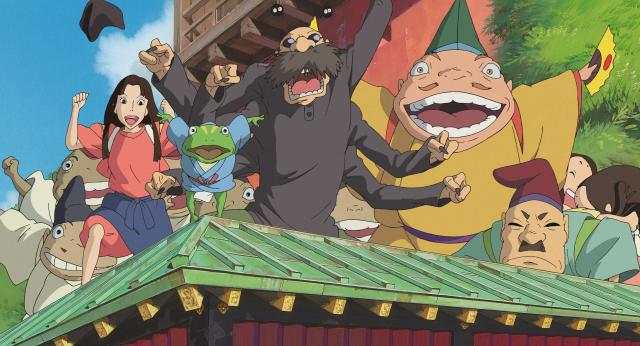
Anime studio shares new production secrets, including the real inspiration behind the bathhouse.
On 7 January, Japanese broadcaster Nippon TV aired Studio Ghibli’s 2001 blockbuster hit Spirited Away in its first “Friday Roadshow” weekly movie slot for 2022.
To celebrate the TV event, Nippon TV announced that Ghibli staff would be on hand during the broadcast to answer select questions submitted by fans in advance via Twitter. Nippon TV made the announcement via their official Twitter account on 27 December, allowing plenty of time for fans to submit questions, using the hashtag #千と千尋の質問 (“Sen to Chihiro no Shitsumon”), which means “Spirited Away Questions”.
▼ Spirited Away‘s Japanese title is “Sen to Chihiro no Kamikakushi“, which translates to “Sen and Chihiro’s Spiriting Away“.
今回も😉
— アンク@金曜ロードショー公式 (@kinro_ntv) December 26, 2021
✨#スタジオジブリ 公式❌#金曜ロードショー 公式 コラボ企画✨
「千と千尋の神隠し」に関する質問 受付中👍
この投稿に返信し「#千と千尋の質問」を付けて質問を書き込んでください❗️
年明け1月7日の「千と千尋の神隠し」放送中、ジブリ公式アカウントから皆さんの質問にお答えします😊 pic.twitter.com/ykWQhuLRoX
When the show began at 9:00 p.m. on Friday, viewers in Japan sat down to watch the beloved film with one eye on Twitter for updates from the official Studio Ghibli account. The studio didn’t disappoint, revealing dozens of different anecdotes and behind-the-scenes information about the film, many of which had never been discussed before now.
So let’s take a look at some of the revelations, shall we?
Starting with…
The fact that the movie’s director, Hayao Miyazaki, was unfazed by the broadcast when it started. According to this tweet from Studio Ghibli, this is the conversation staff had with the director when the broadcast was due to begin:
Staff: “Mr Miyazaki, Spirited Away is starting now on TV.”
Miyazaki: “Eh? Why is it on now? Never mind. Ah, what a great moon.”
Miyazaki may have been more enamoured by the moon outside than the broadcast on TV, but, as always, Ghibli producer, co-founder and close pal of Miyazaki’s, Toshio Suzuki, was much more enthusiastic about the event, sharing this video message with fans.
▼ “Happy New Year. This evening is…the New Year’s broadcast of Spirited Away on Nippon TV. Please give it a watch.”
https://twitter.com/JP_GHIBLI/status/1479415016575152130As the show got underway, so did the revelations, which included the following highlights.
The Original Title of the Film
Q: Why did you decide on the title “Sen to Chihiro no Kamikakushi”? Were there any other title candidates?
A: At the stage of the proposal that was drafted on 2 November, 1999, it was “Sen no Kamikakushi”. At some stage, because the film was Chihiro’s story, the title became “Sen to Chihiro no Kamikakushi”.
The Rock in Front of the Tunnel
Q: What’s the meaning behind the mysterious Dharma-like rock in front of the tunnel?
A: “Seki jin (actually frog person)” is written on the image board.
▼ In Japan, ‘Sekijin’ is a stone image of a person, and this one does look a bit like a frog.
https://twitter.com/JP_GHIBLI/status/1479423854309429256The tunnel from Spirited Away is being made at Ghibli Park!
Q: Are there plans to build that tunnel in Ghibli Park?
A: We asked Goro, who is building the acclaimed Ghibli Park. Goro said: “I’m making ‘that’ tunnel from ‘that’ work (laughs)”
Goro is Miyazaki’s son, who, aside from directing anime films like Tales from Earthsea, From Up on Poppy Hill, and Earwig and the Witch, also played a main role in the construction of the Ghibli Museum in Tokyo’s Mitaka, and served as its first director. News that the tunnel from Spirited Away will be built at Ghibli Park is an extremely exciting revelation, seeing as a lot of the details are being kept hush-hush until the park’s opening this autumn.
The Inspiration for the Mysterious Town at the Beginning of the Film
Q: I’d like to know more about the things and locations etc that were used as references in the making of this work.
A: Locations weren’t specified as “this place”. Miyazaki recalls places he’s visited and draws them while using his imagination to fill in the parts he can’t recall. The mysterious restaurant district that appears at the beginning of the film is said to have been drawn with the image of bar districts from Yurakucho and Shinbashi in mind.
Yurakucho and Shinbashi’s dining districts are filled with tightly packed bars, casual outdoor crate or stool seating and hanging lanterns, which create a fantastic atmosphere at night. The dining establishments in the film are slightly more magical than those in real-life, though.
Rin May Not Be Human
Q: Are characters like Rin, who are drawn as human, human? Or are they some other type of creature?
A: With the workers at the bathhouse, the men are frogmen and the women are slugs. It seems to be symbolic of how all the older guys at Ghibli look the same to new hires at Ghibli. Rin is a close senior [to Chihiro] so she may look like a human being.”
https://twitter.com/JP_GHIBLI/status/1479432193726631942The Gods in the Baths
Q: I want to know more about the chicks who are crammed in the bath!
A: They are chick gods/spirits called “Ootori-Sama”. By the way, “Ushi Oni” also soak in these waters. According to Miyazaki, he thought “It’s tough for the Japanese gods of today” and so the bathhouse where gods and yokai could heal their fatigue was born. Now, 20 years later, that bathhouse might be flourishing even more…..
▼ Ootori-Sama, one of the supporting characters to be included in this Studio Ghibli figurine collection.
https://twitter.com/JP_GHIBLI/status/1479432586183454726▼ Ushi Oni (literally “Cow Demon”)
油屋の客の中にいたこれらの神様は「牛鬼」といいます。頭が牛、首から下が鬼で、日本の古典文学にもこの名前が登場しています。湯舟に浸かっているタイプの牛鬼(画像1)が被るお面は、雅楽「蘇利古」である雑面がモチーフと思われます。#千と千尋の神隠し pic.twitter.com/u7pu7Jp8mU
— キャッスル@ジブリフリーク (@castle_gtm) August 16, 2019
▼ Speaking of Ushi Oni, is it just us or does this 1737 rendering of an Ushi Oni look a liiitle bit like No Face?
▼ No Face even had similar pointy appendages when we shook hands with it in 2019.
The Bathhouse is Modelled on…Studio Ghibli?!
Q: Regarding the bathhouse world, approximately what year was it set in?
A: It’s modelled on ‘Giyofu’ buildings that were popular from the end of the Edo period to the beginning of the Meiji era, so it can be interpreted as after that. The actual model, though, is Studio Ghibli. To work at Studio Ghibli, you have to go up to Suzuki on the top floor and say, “Please let me work” (laughs).
Giyofu was a style of Japanese architecture that mimicked Western-style facades but actually used traditional Japanese building techniques. While it was popular during the early Meiji period (1868-1912), it disappeared once knowledge of Western building techniques became more widespread.
As for the comment about having to ask Suzuki for a job on the top floor of Studio Ghibli, that’s another correlation between new hires at Studio Ghibli and Chihiro’s experience. In the film, Chihiro takes the elevator up to the top floor to ask Yubaba for a job, which makes us wonder…is Yubaba modelled on Toshio Suzuki?
https://twitter.com/JP_GHIBLI/status/1479435475090042883The contents of Haku’s Rice Ball
Q: I have a feeling the rice ball Haku gave to Chihiro was a plain white rice ball, but was there something inside it?
A: The storyboard says: “Three rice balls (without seaweed)”. I’ll leave it up to your imagination whether it contained any ingredients (that doesn’t mean there’s wasabi in it).
▼ That last comment about wasabi in the rice ball is likely in reference to tongue-in-cheek fan theories that it’s the reason why tears well from Chihiro’s eyes while she eats it.
The Creation of No Face
Q: No Face’s movements are a bit cat-like…? That’s what I personally think, but were there any animals etc that you referred to [for the character]?
A: “Animals” as such weren’t used as a reference, but staff at the time said, “We felt like we were consolidating the sick parts of people with obsessions that everyone has.”
The Truth About No Face
Q: Is No Face a god? Is there a reason why he wasn’t allowed in the bathhouse?
A: No Face isn’t a god, but Miyazaki remarked at the time, “No Face is inside all of us”.
https://twitter.com/JP_GHIBLI/status/1479439849115774977That’s certainly a deep statement, but it’s one that rings true. No Face is like the self-serving, indulgent side that lives inside all of us. Whether we allow that side to grow wild or choose to tame it instead is entirely up to us.
A Scene Based on a Real-Life Event
Some of the questions and answers during the evening were interspersed with anecdotes, and when the scene showing the Stink Spirit polluting the bathhouse appeared on TV, the Ghibli account lit up with this tweet:
“The scene where a bicycle appears out of the Stink Spirit really happened when Miyazaki was cleaning a river.”
Miyazaki regularly takes part in volunteer cleanups around his home and the Totoro Forest, so he’s witnessed the effects of pollution firsthand. He’s also borne witness to the effects of a good cleanup, though, which no doubt influenced the scene in which the Stink Spirit was eventually purified, revealing its true identity as a — spoiler alert! — peaceful river god.
The Meaning Behind the Name No Face
Q: Why is No Face called ‘No Face’?
A: At the drawing meeting at that time, Miyazaki said that Yubaba, No Face, and Chihiro each represent “one face of an individual.” Everyone has good and bad points. I believe he created a character called No Face to symbolise the fact that human beings can’t be drawn with just one side to them.
Spirited Away Wasn’t Made for an Overseas Audience
Q: When it was released overseas, what kind of reaction and impressions did Japanese concepts such as Japanese gods and spiriting away have [on foreign audiences]? Also, at the time of production, was it made with overseas reactions in mind?
A: Reactions varied from country to country. There were countries where No Face’s appearance stole the show and others where it was met with laughter. Miyazaki doesn’t make movies with overseas reactions in mind. Suzuki says, “If Japanese people make things that only Japanese people can make, it will become a global work.”
Natsuki Mari’s Powerful Voice
This interesting anecdote reveals some background info on Mari Natsuki’s voice acting, when she recorded the roles of Yubaba and Zeniba. According to the studio:
“When Mari Natsuki shouted “Sen!” the lighting fixtures in the preview room vibrated and made noises, so there were times we had to do retakes. As always, such a powerful voice!”
▼ Natsuki gives us all a quick sample of her vocal talents
https://twitter.com/JP_GHIBLI/status/1412909290944299010The Difference Between Yubaba and Zeniba
Q: Please tell me how to make the distinction between Yubaba and Zeniba.
A: At the image board stage [which uses images to give staff an initial understanding of characters] there were distinct differences between Zeniba and Yubaba. At the storyboard stage, it was thought that it would be better to have them look exactly alike. One staff member said, “Yubaba has one wart on her chest and Zeniba has four warts on her chest” but we can’t confirm that (laughs).
▼ What the sisters initially looked like
https://twitter.com/JP_GHIBLI/status/1479449324807663616The Reason Behind the Dragon Ball-Esque Move
Q: Why did you make the “Not in my house!” scene like Dragon Ball? Why did Yubaba shoot that ball of light?
[The “Not in my house!” scene is the one where Yubaba stands in the path of a rampaging No Face and generates a ball of light between her palms, which she then throws at No Face.]
A: “Like Dragon Ball” is written on the storyboard (laughs). It’s not certain why she shot that ball of light, but Miyazaki has said, “Yubaba is a grandma who can swim through mid-air”.
▼ Yubaba is so powerful she can perform all kinds of magic, even energy attacks like the Kamehameha.
https://twitter.com/JP_GHIBLI/status/1479452652874641413No Face’s Voice Acting
Now for another anecdote, this time regarding No Face’s “after recording”, when Akio Nakamura, the character’s voice actor, was required to add sounds in the post-recording.
“No Face’s after recording was a series of non-stop raucous laughter.
‘Please do a sadder ‘ah”
‘Ah’
‘A sadder ‘ah'”
‘Ah……’
As we know from our own reporter voicing characters in Hollywood’s latest Superman films, sometimes it’s the shortest words that take the longest time to perfect.
The Part That Took the Longest to Draw
Q: Which scenes took the longest time to draw?
A: If there are many characters, it will take time [to draw], but there’s no way to clearly say “this cut” took the longest. I don’t know if it took the longest time, but Miyazaki often redrew the details for Chihiro’s gestures, and in particular, he seems to have worked hard to fix the scene where Chihiro receives a hair tie from Zeniba and uses it to tie her hair.
The Secret Behind the Pigs
Q: How did Chihiro realise her parents weren’t in the group of pigs at the end?
A: I’m not sure of the reason, but please have a read of the children’s novel Krabat, which Miyazaki-san was greatly influenced by.
Krabat is a 1971 fantasy novel written by Otfried Preußler, which deals with the lure of evil and black magic. There’s a scene in the book where the main character distinguishes the transformed crow from 12 crows, which is likely the inspiration behind the scene in Spirited Away.
The One Thing Chihiro Takes Home From the World of Spirited Away
Q: Is there a reason why Chihiro’s hair tie glistens at the end?
A: That hair accessory is the only proof that Chihiro worked at the bathhouse. It can be said that it was a direction choice to leave an impression [on the viewer].
▼ The scene where Chihiro eventually looks back at the end with the hair tie in her hair is so profound it has a spot on the wall at Studio Ghibli.
https://twitter.com/JP_GHIBLI/status/1479459819736412161How Long Was Chihiro Spirited Away For?
Q: About how many days was the entire affair — Chihiro getting lost in the mysterious town, working in the bathhouse, and leaving the tunnel?
A: Suzuki advocates the three-day theory. When Chihiro’s parents get into the car as if nothing had happened, the inside of the car is full of dust, so the passage of time may change from one end of the tunnel to another.
Was There Ever a Reunion?
Q: Did Chihiro and Haku ever meet afterwards?
A: Haku was the spirit of the river that runs near the house where Chihiro used to live. If Chihiro ever visits that river…
▼ This final Q & A tweet, referring to a possible river reunion, was one of the most liked of the night, receiving over 100,000 likes.
https://twitter.com/JP_GHIBLI/status/1479460663865262080The very last tweet of the day, however, was a plug for Masashi Ando, who worked as the animation director and character designer for Ghibli’s Princess Mononoke and Spirited Away.
▼ “The Deer King: The Promised Journey With Yuna” directed by Masashi Ando, who kindly drew Chihiro and Haku for us for the first time in 20 years, will be released on Friday, 4 February.”
https://twitter.com/JP_GHIBLI/status/1479461068040818694And with that final tweet of the day, the TV Twitter event came full circle, with the studio ending on the very same image of Chihiro and Haku that they started the day with.
▼ Starting and ending the special broadcast day with the same image.
https://twitter.com/JP_GHIBLI/status/1479226272530112513Ando left Ghibli following a directorial spat with Miyazaki after Spirited Away — and eventually went on to work as the animation director for Your Name, the film that threatened to topple Spirited Away at the box office — so it’s nice to see that Ando remains on good terms with the studio.
There should be no reason for any animosity really, as Suzuki says he sees a lot of Miyazaki’s influence in Ando’s style, and as for Miyazaki, he couldn’t care less about competitors. He’s just a retired old man picking up trash.
Source: Twitter/@JP_GHIBLI
Featured image: Studio Ghibli
Insert images: Studio Ghibli (1, 2, 3, 4, 5,), Wikipedia/Sawaki Suushi, SoraNews24
● Want to hear about SoraNews24’s latest articles as soon as they’re published? Follow us on Facebook and Twitter!


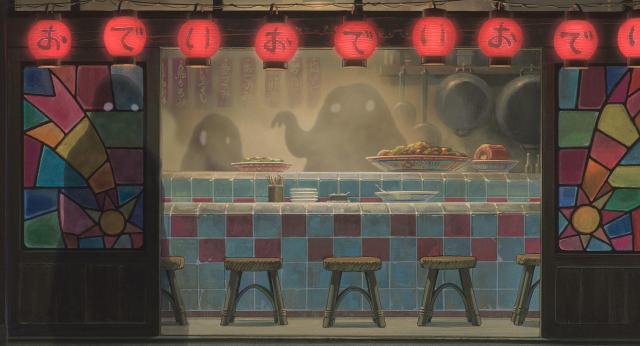
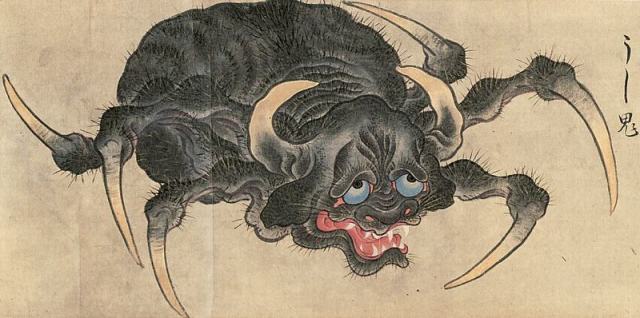
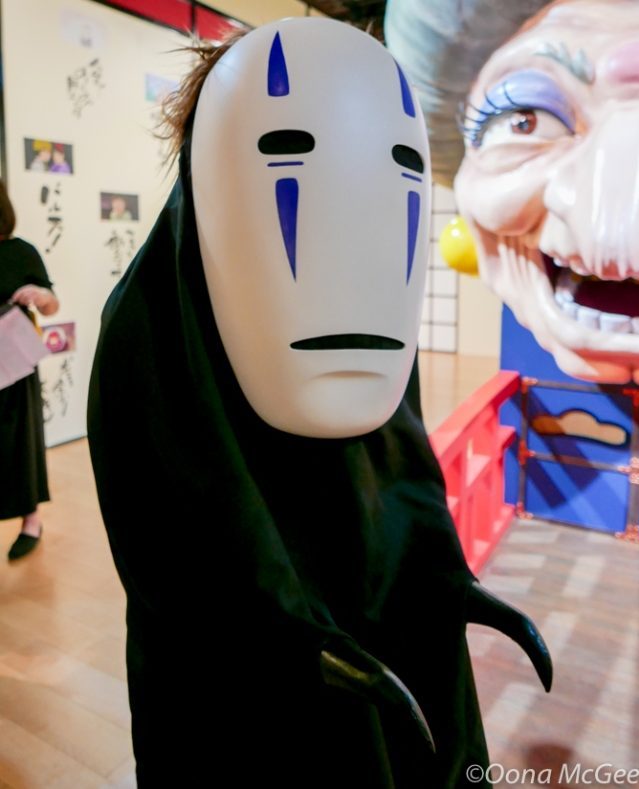
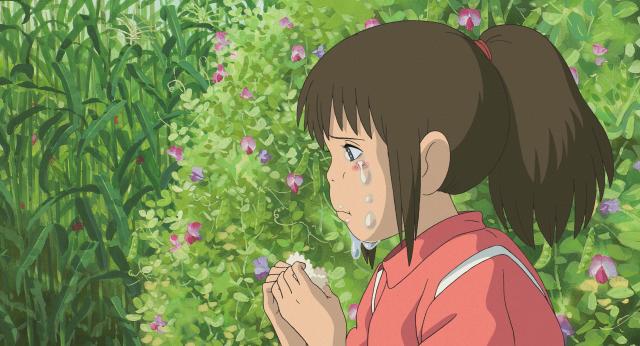
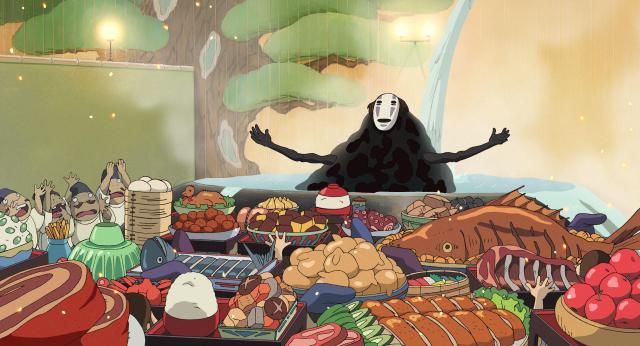
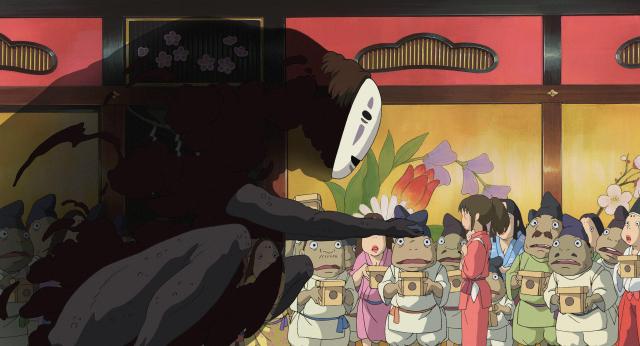
 Ghibli Park: Opening date, first photos, and a new promo video produced by Studio Ghibli!
Ghibli Park: Opening date, first photos, and a new promo video produced by Studio Ghibli! First look at Studio Ghibli’s new Spirited Away live-action stage play
First look at Studio Ghibli’s new Spirited Away live-action stage play Ghibli found out about the unofficial Ghibli cafe in Nagoya…then something very sweet happened
Ghibli found out about the unofficial Ghibli cafe in Nagoya…then something very sweet happened Yubaba and Zeniba pen stands from Studio Ghibli capture the magic of Spirited Away
Yubaba and Zeniba pen stands from Studio Ghibli capture the magic of Spirited Away Spirited Away bathhouse kimono, Princess Mononoke necklace merch coming to Ghibli Park
Spirited Away bathhouse kimono, Princess Mononoke necklace merch coming to Ghibli Park Foreigner’s request for help in Tokyo makes us sad for the state of society
Foreigner’s request for help in Tokyo makes us sad for the state of society Should you add tartar sauce to Japanese curry rice? CoCo Ichi makes diners an unusual offer
Should you add tartar sauce to Japanese curry rice? CoCo Ichi makes diners an unusual offer Japanese city loses residents’ personal data, which was on paper being transported on a windy day
Japanese city loses residents’ personal data, which was on paper being transported on a windy day Seaside scenery, history, and so many desserts on Yokohama’s Akai Kutsu【Japan Loop Buses】
Seaside scenery, history, and so many desserts on Yokohama’s Akai Kutsu【Japan Loop Buses】 Harajuku Station’s beautiful old wooden building is set to return, with a new complex around it
Harajuku Station’s beautiful old wooden building is set to return, with a new complex around it We tried Korea’s way-too-big King Tonkatsu Burger at Lotteria 【Taste Test】
We tried Korea’s way-too-big King Tonkatsu Burger at Lotteria 【Taste Test】 Mt. Koya planning to instate visitor’s tax to cope with huge tourist numbers
Mt. Koya planning to instate visitor’s tax to cope with huge tourist numbers Red light district sushi restaurant in Tokyo shows us just how wrong we were about it
Red light district sushi restaurant in Tokyo shows us just how wrong we were about it Nara unveils new vending machines that sell deer crackers
Nara unveils new vending machines that sell deer crackers Japanese ramen restaurants under pressure from new yen banknotes
Japanese ramen restaurants under pressure from new yen banknotes McDonald’s new Happy Meals offer up cute and practical Sanrio lifestyle goods
McDonald’s new Happy Meals offer up cute and practical Sanrio lifestyle goods French Fries Bread in Tokyo’s Shibuya becomes a hit on social media
French Fries Bread in Tokyo’s Shibuya becomes a hit on social media Studio Ghibli releases new action figures featuring Nausicaä of the Valley of the Wind characters
Studio Ghibli releases new action figures featuring Nausicaä of the Valley of the Wind characters New private rooms on Tokaido Shinkansen change the way we travel from Tokyo to Kyoto
New private rooms on Tokaido Shinkansen change the way we travel from Tokyo to Kyoto Tokyo Tsukiji fish market site to be redeveloped with 50,000-seat stadium, hotel, shopping center
Tokyo Tsukiji fish market site to be redeveloped with 50,000-seat stadium, hotel, shopping center All-you-can-drink Starbucks and amazing views part of Tokyo’s new 170 meter-high sky lounge
All-you-can-drink Starbucks and amazing views part of Tokyo’s new 170 meter-high sky lounge Beautiful Ghibli sealing wax kits let you create accessories and elegant letter decorations【Pics】
Beautiful Ghibli sealing wax kits let you create accessories and elegant letter decorations【Pics】 Studio Ghibli releases Kiki’s Delivery Service chocolate cake pouches in Japan
Studio Ghibli releases Kiki’s Delivery Service chocolate cake pouches in Japan New definition of “Japanese whiskey” goes into effect to prevent fakes from fooling overseas buyers
New definition of “Japanese whiskey” goes into effect to prevent fakes from fooling overseas buyers Our Japanese reporter visits Costco in the U.S., finds super American and very Japanese things
Our Japanese reporter visits Costco in the U.S., finds super American and very Japanese things Studio Ghibli unveils Mother’s Day gift set that captures the love in My Neighbour Totoro
Studio Ghibli unveils Mother’s Day gift set that captures the love in My Neighbour Totoro More foreign tourists than ever before in history visited Japan last month
More foreign tourists than ever before in history visited Japan last month New Pokémon cakes let you eat your way through Pikachu and all the Eevee evolutions
New Pokémon cakes let you eat your way through Pikachu and all the Eevee evolutions Sales of Japan’s most convenient train ticket/shopping payment cards suspended indefinitely
Sales of Japan’s most convenient train ticket/shopping payment cards suspended indefinitely Sold-out Studio Ghibli desktop humidifiers are back so Totoro can help you through the dry season
Sold-out Studio Ghibli desktop humidifiers are back so Totoro can help you through the dry season Japanese government to make first change to romanization spelling rules since the 1950s
Japanese government to make first change to romanization spelling rules since the 1950s Ghibli founders Toshio Suzuki and Hayao Miyazaki contribute to Japanese whisky Totoro label design
Ghibli founders Toshio Suzuki and Hayao Miyazaki contribute to Japanese whisky Totoro label design Doraemon found buried at sea as scene from 1993 anime becomes real life【Photos】
Doraemon found buried at sea as scene from 1993 anime becomes real life【Photos】 Tokyo’s most famous Starbucks is closed
Tokyo’s most famous Starbucks is closed One Piece characters’ nationalities revealed, but fans have mixed opinions
One Piece characters’ nationalities revealed, but fans have mixed opinions We asked a Uniqlo employee what four things we should buy and their suggestions didn’t disappoint
We asked a Uniqlo employee what four things we should buy and their suggestions didn’t disappoint Princesses, fruits, and blacksmiths: Study reveals the 30 most unusual family names in Japan
Princesses, fruits, and blacksmiths: Study reveals the 30 most unusual family names in Japan The secret behind this mysterious Studio Ghibli x Pixar image
The secret behind this mysterious Studio Ghibli x Pixar image Studio Ghibli reveals mystery hidden on coat of arms and outdoor signs at Ghibli Museum
Studio Ghibli reveals mystery hidden on coat of arms and outdoor signs at Ghibli Museum Studio Ghibli announces release date for Hayao Miyazaki’s new anime movie, releases key art
Studio Ghibli announces release date for Hayao Miyazaki’s new anime movie, releases key art Spirited Away meals and merchandise coming to new Studio Ghibli exhibition in Tokyo
Spirited Away meals and merchandise coming to new Studio Ghibli exhibition in Tokyo Now’s your chance to ask Studio Ghibli ANYTHING you want about Princess Mononoke
Now’s your chance to ask Studio Ghibli ANYTHING you want about Princess Mononoke Who is No Face? Hayao Miyazaki finally gives us the answer
Who is No Face? Hayao Miyazaki finally gives us the answer Ghibli Park reveals photo of Elevator Tower entrance, says fans can start using it right now
Ghibli Park reveals photo of Elevator Tower entrance, says fans can start using it right now Terrifying snow No Face found in Japan gets thumbs up from Studio Ghibli【Photos】
Terrifying snow No Face found in Japan gets thumbs up from Studio Ghibli【Photos】 Ghibli releases free-to-use artwork from Castle in the Sky Laputa, comes with standard disclaimer
Ghibli releases free-to-use artwork from Castle in the Sky Laputa, comes with standard disclaimer Hayao Miyazaki draws Year of the Rabbit illustration for New Year’s card to Studio Ghibli fans
Hayao Miyazaki draws Year of the Rabbit illustration for New Year’s card to Studio Ghibli fans Hayao Miyazaki draws Year of the Tiger illustration for New Year’s card to Studio Ghibli fans
Hayao Miyazaki draws Year of the Tiger illustration for New Year’s card to Studio Ghibli fans Spirited Away voice actors from China recreate iconic scenes from the anime film
Spirited Away voice actors from China recreate iconic scenes from the anime film Ghibli fan wins Guinness World Record for the largest collection of Studio Ghibli memorabilia
Ghibli fan wins Guinness World Record for the largest collection of Studio Ghibli memorabilia Studio Ghibli releases new Spirited Away kami collection
Studio Ghibli releases new Spirited Away kami collection Spirited Away bathhouse spirits become self-righting dolls in new Studio Ghibli collection
Spirited Away bathhouse spirits become self-righting dolls in new Studio Ghibli collection
Leave a Reply